Remember the phrase, in an earlier part of our story, “when Mabel in her final years walked around Setters’ Lake every day before she retired for the evening”? Mabel at Leander’s lake? And, living in this fine addition to the recently built Setters’ home? How could that possibly be? She was five hundred miles away when we last heard about her. She never knew, or even ever heard of Leander Setters. How could she be out on the prairie and suddenly appear walking around the little lake. Well, for one thing, she didn’t suddenly appear down in that hollow. Some strange events had taken place in her life.
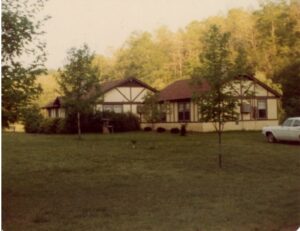
And is this the same Mabel who, forty years earlier, was frantically searching for her six-year-old daughter, Dana, during the depression and the horrible dust storms of Kansas? You bet, the same. But now, that little six-year-old was grown and it was she who had gone looking for Mabel. Not that Mabel was lost, it was just that Mabel needed help.
Let’s travel down that road for a while. A lot of people did many things for Mabel to make that stroll. And none of what they did was for that reason. Things just turned out that way. Before Mabel took her daily strolls around the lake there was another lady, years earlier, who helped pave the way, and she made an even longer journey to get there.
If you travel eight hundred miles due south from Leander’s lake on Little Marrowbone you will end up in the middle of the Gulf of Mexico. However, if you cantor over to the South-East, you will end up in Melbourne, Florida. Probably in the middle of a paved parking area or in a housing complex. If you go a little bit too far east, you might find yourself interrupting one of NASA’s space shots. They are just across the St. John’s River from Melbourne. So be careful.
But, if you made that same trip back in 1921, the south-east one, you would end up in the middle of an orange grove owned by Lawrence Roberts. He and his nine children, including his eighteen-year-old daughter, Esther Louise, made their living growing oranges, grapefruit and tangerines. Hard work, but he had brought his family there from Kansas, in 1912, two years before the first ship passed through the Panama Canal, changing the United States eastern coastal cities forever. The Roberts family didn’t make the changes though; the Canal did.
Esther had to do manual work in the orange grove in addition to helping raise her siblings. She told her grand-daughter one day about a harrowing experience involving the wagon and team of mules. 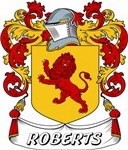 Lawrence’s grandfather, Esther’s great-grandfather, Rees Roberts came to America from Wales, so Lawrence was just two generation away from his ancestors who were born outside the United States. Unfortunately, their arrival, if in New York, did not allow them to see the Statue of Liberty. It was not completed until 1892, the year that Esther’s future husband, the father of her three sons, was born.
Lawrence’s grandfather, Esther’s great-grandfather, Rees Roberts came to America from Wales, so Lawrence was just two generation away from his ancestors who were born outside the United States. Unfortunately, their arrival, if in New York, did not allow them to see the Statue of Liberty. It was not completed until 1892, the year that Esther’s future husband, the father of her three sons, was born.
Lawrence’s father, Daniel, served in the Civil war in an infantry unit from Ohio.
Nine of Lawrence’s twelve children lived beyond infancy. Esther was born on Sunday, October 4th, 1903, the same year that Bing Crosby was born, and two months after the famous western character, Calamity Jane died. Calamity Jane dressed like a man and became a scout for General Custer. Esther would never, never in her life dress like a man.
And, in 1903, the Miller Beer Company began selling a very popular beer in Milwaukee, Miller High Life. Esther’s year of birth is on the label. This was as close to a bottle of beer that Esther ever got. One hundred seventeen years later a mass shooting at the brewery by a disgruntled employee who had recently been fired, left five workers dead. The fifty-one-year-old shooter then went home and killed himself. All his neighbors described him as a nice gentleman.
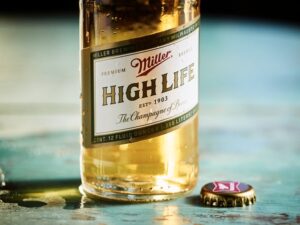
Although she would live nearly a quarter century as the wife of an alcoholic, and amongst those who drank beer and made moonshine whiskey she never took up consuming alcohol. By the way, Esther had the first of her three sons the year the founder of the Miller Brewing company, Frederick Miller, a German immigrant, died. The year, 1923, that actor Charlton Heston was born she gave birth to her first son. Harold, her son, and Charlton both served in World War II as gunners on bombers.
No phone calls were made about her birth, because the telephone service didn’t arrive in Clearwater, Kansas until 1910, when Esther was seven years old. The Roberts lived out in the country anyway. Only about four hundred people lived in Clearwater itself. Esther’s birth was an important event for their little community but not much for outsiders. She would not have been aware, but she had the same name as the first and only baby ever to be born in the nation’s White House, to a president and first lady, Esther Cleveland; daughter of Grover and Frances Cleveland. As it turned out, 1903 was a busy, busy year.
Frances was the youngest first lady in our history, and 28 years younger than Grover. We can pursue our family trees, you and I, but it doesn’t take long before the search becomes more than we novices can handle. Take the Roberts family for example. We have gone back as far as Daniel Roberts in any detail. Both of their parents came from Wales. Esther’s family, the Blacks, are from Wales and England. The Rhodes we can trace back to before the Civil War. And Leander’s wife, Louisa? The Skeins? As we venture down the names of these ancestors, we simply find too many to delve into. Included is Daniel Roberts wife Elizabeth Chenoweth, Roberts, Rhodes, Skeins, Black, Setters, Jordan. And there is a man named Lester Chapman, at one time married to Mabel.
Did we consider chasing down the Chapman ancestry? Not on your life, and you will read why, if you haven’t already. You will read about Lester’s daughter, Dana. There are census data that places people with other people every ten years. But trying to determine the relationships that these folks have with each other and why they do things is very difficult to come by.
Raymond and Jim, Jim about 12 and Raymond 15 or so, standing on the front porch of their little house on Little Marrowbone Road. Notice there are no house numbers, a name on the mailbox sufficed. Later years the place had the address of 4237 Little Marrowbone Creek Road, Joelton, TN. 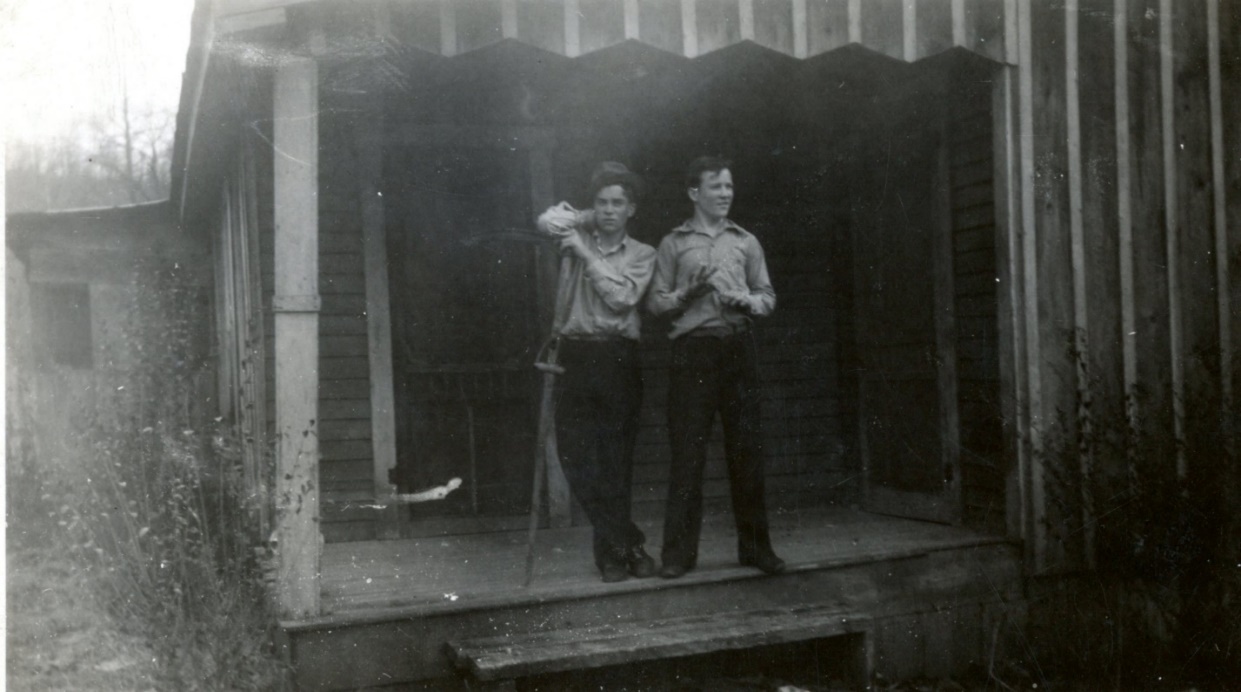
Raymond and Jim Setters on the front porch of their house.
The only camera in the Setters family was a box camera for which there was seldom any film, and if there was film and someone to take a picture, there was the added cost of getting the film developed. Both likelihoods were rare, so most of the pictures taken of the family when the boys were young were taken by Bertha, their aunt. Or, as they referred to her, “Auntie.”
The photograph above of Raymond and Jim, finds Raymond leaning on what they referred to as a mowing blade as they stood on the front porch of the house. The big blade was used to cut Johnson grass to feed Bossie, their cow.
What Jim has in his left hand and is poking with the forefinger of his right hand is not known. Of course. neither had any idea that in about a half a century Jim would be encouraging, and paying, Raymond and his other brother, Harold, to tear down the house.
When Jim was younger, ten or so, he would hold that screen door behind them open so Esther could shoo the flies out of the house using a towel in each hand and waving them in the air. Three boys going in and out of screen doors are flies best friends. There was no money to buy fly spray. It is hard to believe that the boys would lie down on the front boards of that little porch when it was raining with their father. His head would be about where you see the little blue face and his boys would lie next to him. These occasions were rare because John was so often under the influence of moonshine whiskey. Snap, their dog, found a place to fit in.
Esther eventually went to work in Nashville at a shirt factory and moved into town, taking her three sons with her, leaving John the only occupant of the little house. John eventually moved to town. And you guessed it, to 1116 Buchanan
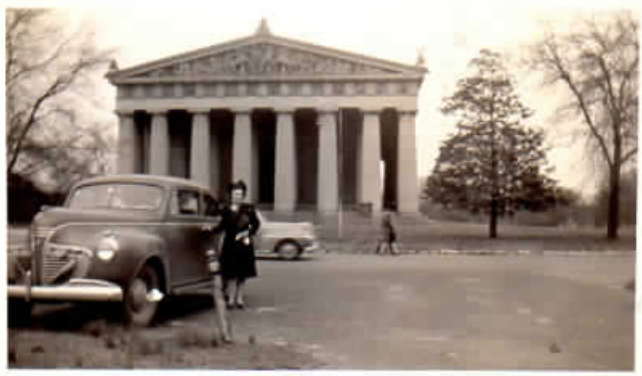 Nashville
Nashville 
The Parthenon in inside Centennial Park.
Esther at about age 42 standing in front of the Parthenon. At that time, all three of her sons were in the military and probably overseas somewhere.
The year Esther was born, the Centennial Park in Nashville, Tennessee was officially opened. The Creek replica of the Parthenon was there. In thirty-years Esther’s three sons would play on the swing sets in the park.
The Parthenon was extensively re-modeled through the years and just six months, in 1931, before that little six-year-old girl, Dana Chapman, mentioned above was born, the newly refurbished and art filled structure was opened for tours by the public. The three boys played in the park on a few occasions, and even used the paddle boats once or twice, but only once went inside the Parthenon and then for just a few minutes. On the other hand, they also never went to the Grand Ole Opry either. Why bring up the Parthenon? It was seven hundred miles from that little farmhouse on the Kansas prairie where Esther was born. No one even suspected what would be happening in the future. In thirty-years Esther would be making and ironing shirts in a factory just eight blocks from that beautiful building.
Bandleader Lawrence Welk was six months old, still in diapers, when Esther was born. After his success, Lawrence wrote an autobiography he called Wunnerful, Wunnerful. It could easily have described both. Esther smiled a lot. Only one man in show business was richer than Lawrence Welk, when Mr. Welk died in 1992 at the age of eighty-nine. That man was another showman, Bob Hope. Bob Hope though, lived to be ONE HUNDRED YEARS OLD. Like John Setters, Bob Hope, was married twice. He left his second wife nearly all of his fortune. Esther, John’s second wife, on the other hand, spent a lot of years as the poor mother of three boys on Little Marrowbone, deep in the hills of middle Tennessee. But, in most pictures taken of Esther and Welk, never together of course, they were smiling.
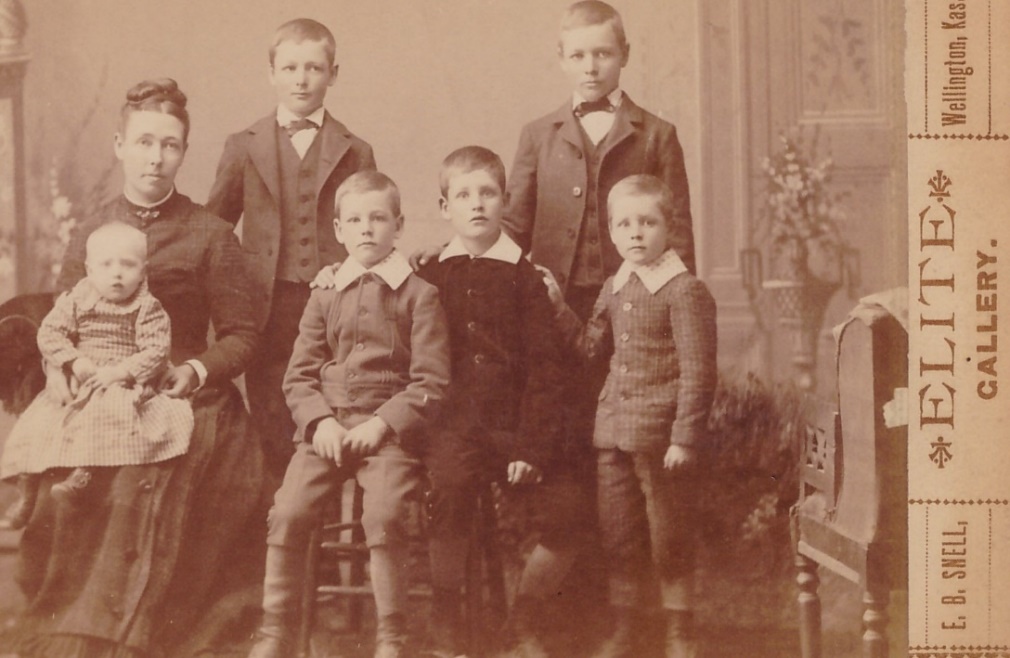 Twenty years after Esther died, her daughter-in-law, Dana, would dance with Esther’s little twin grandchildren. Dana would hold their hands, put their little feet on the top of hers and dance to the music on TV from, yep, The Lawrence Welk Show. The little ones spent the weekends with Jim Setters and his wife Dana in Boulder, Colorado. Esther told Dana soon after she and Jim were married, that every woman should have a daughter. But Esther never did.
Twenty years after Esther died, her daughter-in-law, Dana, would dance with Esther’s little twin grandchildren. Dana would hold their hands, put their little feet on the top of hers and dance to the music on TV from, yep, The Lawrence Welk Show. The little ones spent the weekends with Jim Setters and his wife Dana in Boulder, Colorado. Esther told Dana soon after she and Jim were married, that every woman should have a daughter. But Esther never did.
Dana, and Raymond’s wife, Vickey, would fill the bill nicely.
The trend in the Roberts family of having just male babies falsely began, and ended, long before Esther’s venture into motherhood. Her grandmother, Mary Elizabeth, Roberts, nick-named, “Libby” visited the Elite Photo Gallery in Wellington, Kansas way back in 1878 with her children, seemingly, all boys with Lawrence, Esther’s father-to-be, standing at her left shoulder, and the first of several girl babies, sitting in her lap.
For a quite a while, the author, of “THE LADIES OF THE LAKE,” me, Jim, thought the baby in Elizabeth’s lap was Lawrence, my grandfather, and not the first of four girls.
Notice that the boys all seem to look alike. They do to me. The boy with a blue star on his right shoulder, grew up and became my grandfather, Lawrence. I visited him before I joined the Marines in 1945. He was then in his mid-sixties. We raced to his front porch, and he won! But he made me run in a full circle during our race. I ALSO VISITED WITH MY UNCLE, WHO HAD BEEN A NAZI POW DURING WWII. It turned out to be an-humbling visit.
The baby girl, on Libby’s lap, looks like a baby girl, to me, (only) because she has on a little dress.
However, this family photo can be a bit deceiving. Mary Elizabeth, LIBBY, did not stop having babies when the little boy standing on the far right was born.
Mary Elizabeth Chenowith Roberts, somewhere along the line, and for what reason we don’t know, acquired the nick name of “LIBBY” (Your author finally learned from Vickey Setters (one of his advisors and his late brother’s widow) that “LIBBY” is an accepted colloquial word for Elizabeth) Vickey’s name is “Vista,” but she goes by the name of “VICKEY”. (Your author is a slow learner).
And in addition to the boys above, Libby also gave birth to four girls, Nellie, Martha, Mary and Anna, a total of thirteen children. When Libby’s husband, Daniel, died, in 1931 all the girls attended the funeral. All four of the girls were sisters to Esther’s father Lawrence, thus becoming Esther’s Aunts. Martha, in her later years lived in Wichita, not far from Esther, and enjoyed a good relationship with her niece, including special dinner parties, like a special Easter dinner below. Jim, your author, took the picture of the family group, so, is not in the picture. His mother Esther is on the extreme left and her “Aunt” Martha, on the extreme right (with her head tilted)
ALL AT THE TABLE HAVE BEEN PREVIOUSLY IDENTIFIED
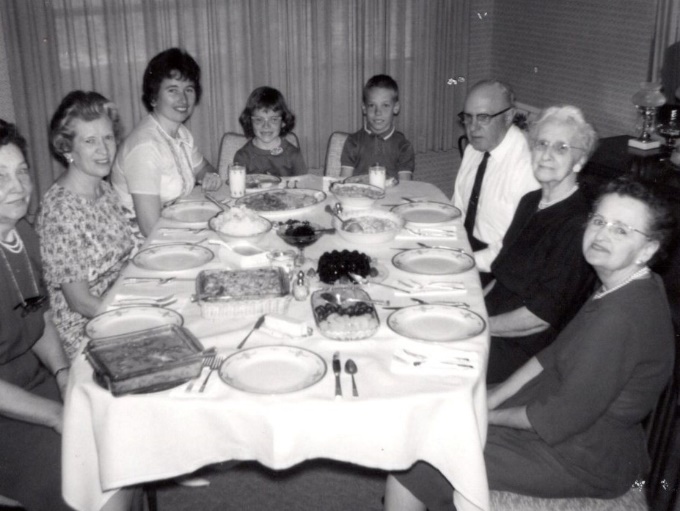
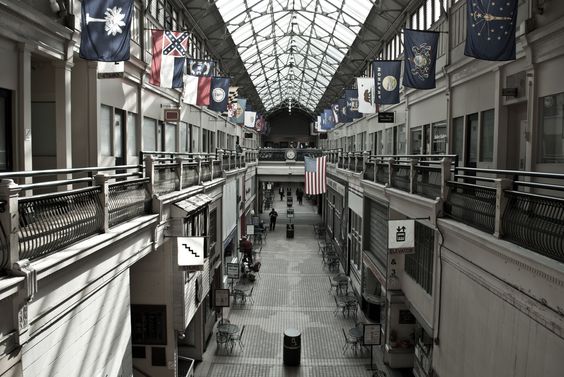
Esther was born just five months after the grand opening of the famous covered Arcade in Nashville. Nearly fifty thousand attended. At the time the total population of Nashville was about one hundred twenty-five thousand. The Arcade was sold in April 1st 2200, to a New York Realtor, for twenty-eight Million Dollars.
1902 was the year Teddy Roosevelt was re-elected president and Franklin Delano, his cousin proposed to Eleanor Roosevelt, Franklin’s fifth cousin. The year Esther was born Teddy visited Yosemite National Park National Park. Before Esther was ten years old, Teddy had more than doubled the number of National Parks. Esther’s birth year, 1903, the New York Times predicted that humans wouldn’t be able to fly for at least a million years.
Two and a half months after Esther was born, Orville Wright flew the first airplane ever flown in the world at Kitty Hawk beach in North Carolina.
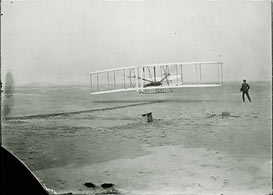 By the way, when the Wright brothers made the first full circle flight and landed in the same field from which it had taken off, it was first reported in an obscure publication being sent to beekeepers and not one of the big newspapers. Certainly not the Times. The man who took this picture, A. I. Root, was a beekeeper and aviation’s first true journalist, wrote this description.
By the way, when the Wright brothers made the first full circle flight and landed in the same field from which it had taken off, it was first reported in an obscure publication being sent to beekeepers and not one of the big newspapers. Certainly not the Times. The man who took this picture, A. I. Root, was a beekeeper and aviation’s first true journalist, wrote this description.
“I told you there was not another machine equal to such a task as I have mentioned, on the face of the earth; and, furthermore, just now as I dictate there is probably not another man besides these two who have learned the trick of controlling it.”
The Wright Brothers
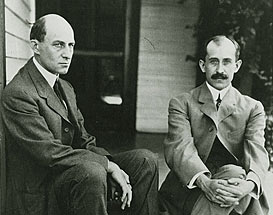 That same year the Ford Motor Company was incorporated. Things were really happening.
That same year the Ford Motor Company was incorporated. Things were really happening.
In less than fifty years, Wichita, Kansas, only about thirty miles from the Roberts house, where seven of the nine Roberts children were born, including Esther, would be known as the Airplane Capitol of the World. Wichita is also where Esther is buried.
Four months, almost to the day after Esther was born, a baby boy was born less than four hundred miles away in Iowa. They named him Alton Glenn Miller; he became the most famous band leader ever, the great Glenn Miller. Glenn was born just a few miles from the birthplace of a baby girl, born three decades later who would be one of Esther’s future daughters-in-law. Glenn would be killed in World War II, when bombs were inadvertently dropped from a bomber onto his airplane.
But the band, bearing his name, would continue to tour Europe, after the war, and Esther’s granddaughter, Carol Setters, would be its pretty red-haired vocalist. Did you get all of that?
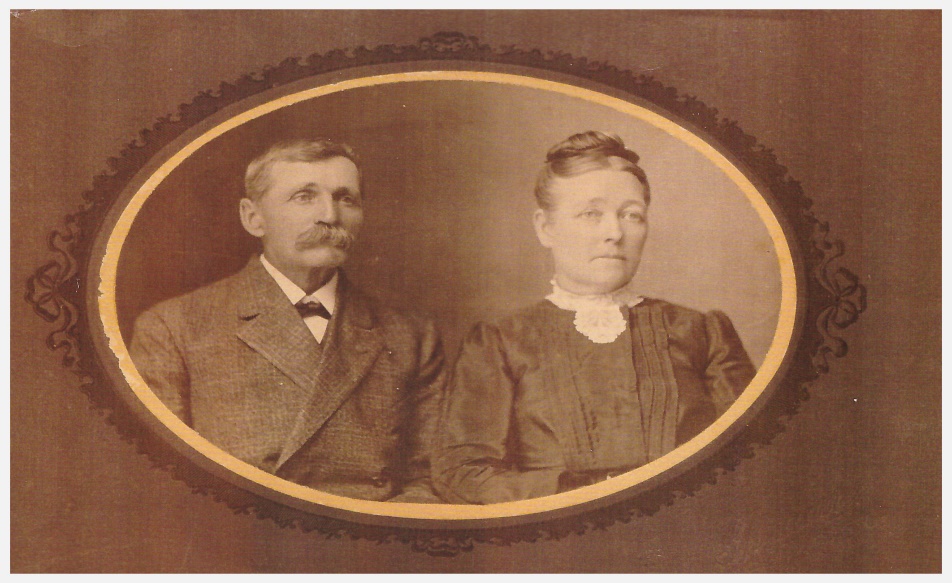 When Esther was five years old the Model T began rolling off the production line. And kept coming until Esther’s third son was born in 1927. So, there was quite a bit going on then. Bing Crosby’s birth was probably no more earth shattering than was Esther’s. For you old timers, Bing’s first and very popular radio show began the year that Esther’s daughter-in-law, Dana, was born, in 1931. Bing lived about five years longer than Esther.
When Esther was five years old the Model T began rolling off the production line. And kept coming until Esther’s third son was born in 1927. So, there was quite a bit going on then. Bing Crosby’s birth was probably no more earth shattering than was Esther’s. For you old timers, Bing’s first and very popular radio show began the year that Esther’s daughter-in-law, Dana, was born, in 1931. Bing lived about five years longer than Esther.
Daniel H and Elizabeth (Chenoweth) Roberts
Esther’s grandparents, Daniel and Elizabeth Roberts, moved to the Clearwater area in 1873 and lived on the same farm for fifty years. When they first moved to the, then desolate country, they lived in a tent until lumber could be hauled, by mule and wagon, down from Wichita. In the newspaper article about their golden wedding celebration their fifty years of living on that one farm, is described.
During these fifty years they have undergone the usual experience of Kansas pioneers with alternate periods of prosperity and leanness and a thorough acquaintance with grasshoppers, tornadoes, Indian scares, hot winds, crop failures and sunflowers, until now they can look back over the history of a country developed from a treeless, thinly populated prairie to the present fully developed and green decked state.
Only eight of their thirteen children were still living and only five attended the golden wedding celebration dinner. Lawrence and his nine children, including Esther, who was pregnant with Harold, were then living in Florida.
It was fifteen hundred miles from Melbourne, Florida to Clearwater, Kansas; not something you would want to drive in a T-Model Ford. And we don’t even know if Lawrence even owned a car. Lawrence had lost his wife just five years earlier. Esther was twenty years old. In four months, she would be a mother to her first son. The first of three.
More often as not, when we wander back down through the years of our ancestors, we tend to concentrate on the lives of the males.
The females must exhibit some outstanding characteristics to be featured.
But then too, it may depend on the one who is doing the writing. In this story, the author has chosen the ladies, thus the title, LADIES OF THE LAKE. You will be introduced to some of the ladies who never even knew the lake ever existed and only indirectly played any role in its existence. But, without these ladies there would be no men. Some of the ladies paid a big price for their participation in our summary of events.
This picture is of Esther’s other grandfather, her mother’s father, Thomas Black.

Gertrude Thomas Black Myrtle Bessie
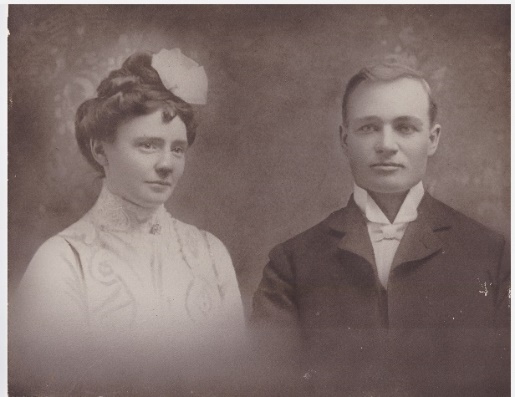
Gertrude and Lawrence Roberts near the time of their wedding in 1900.

Lawrence and Gertrude would again be side by side 42 years after she died in 1918, over 1300 miles from where they stood, getting married.
Larry Clum, whose grandmother was Myrtle, has kept track of the Black family
better than anyone else in the family. Larry says, “Their mother, Mollie, seems to have disappeared from the face of the earth in about 1890.” Mollie would have been Larry’s great-grandmother. She would have been one of the Setters boys’ great-grandmothers also.
But unlike Mollie, their other great-grandmother did not disappear. Louisa Setters died the same year Mollie disappeared; 1890. Louisa’s gravestone sits beside Leander’s only a few feet from the west shoreline of the LAKE, as in Ladies of the Lake.
You may have to read the below Black family information very slowly and then re-read it to grasp the explanation of how the Black family was ultimately dispersed.
Little has been said so far in our story about the Black family, and even less about Gertrude as a youth or young mother. But, according to the Grandson of Gertrude’s sister, Larry Clum, some serious family problems took place in the Black family in about 1890.
One of the logistical problems is the name, Gertrude. There is the Gertrude shown above and then, the last of her ten children, in 1918, was named Gertrude. The three sisters pose with their father Thomas. Thomas and Bessie are seated, and Gertrude and Myrtle stand behind them. Thomas, in his first marriage, had two sons. He took both with him to the Oklahoma land Rush. Larry Clum says Thomas must have returned for this photograph with his three daughters.
Lawrence had served several months in the Army Cavalry in the Philippine Islands just after the beginning of the year 1900, during the Spanish-American War.
After coming back home, he and his wife, Gertrude, lost very little time in creating a family. Eight years, and a few more babies later, Lawrence must have felt that living in the warm climate of Florida was better than the cold wind-swept flat lands of Kansas.
By then, 1911, there were five sons and four daughters. The oldest daughter, Esther, was nine years old when the family moved to Florida and had helped raise the younger siblings. When Lawrence brought his family to Melbourne there were fewer than two hundred residents there, only about six thousand people were living in Miami. Esther’s only outside the house employment, later in life, was in a garment factory but she was born ten years before the zipper was invented. The new-fangled device was patented by a man in Hoboken, New Jersey. Singer, and movie star Frank Sinatra, was born in Hoboken when Esther was twelve.
Esther told a daughter-in-law that she believes her mother’s premature death was caused by her being almost constantly pregnant from 1900 until 1917. Gertrude Roberts died in 1918, the year her last child, a girl, was born.
The baby was named Gertrude.
In a letter to Esther’s brother Harold, Lawrence’s sister, Nellie Roberts, then living in Colorado Springs, alluded to the fact that Lawrence was not fond of farming.
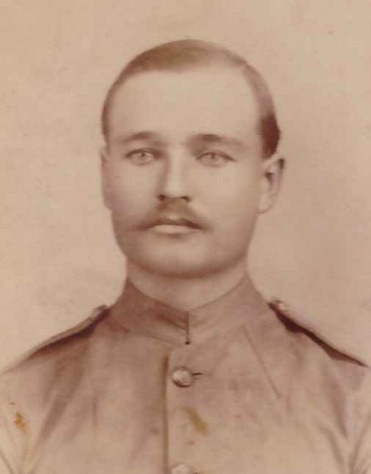 But when he was released from the Army after serving in the Philippines, in the Spanish-American War, Gertrude was anxious to get married and farming was about all that Lawrence could do at that time. Nellie said he would have been better at clerical work with the Government.
But when he was released from the Army after serving in the Philippines, in the Spanish-American War, Gertrude was anxious to get married and farming was about all that Lawrence could do at that time. Nellie said he would have been better at clerical work with the Government.
A few weeks before the Roberts family moved from Kansas to Florida the General Electric company unveiled the first home refrigerators, two of them. The new-fangled electric ice boxes had been invented by a French Monk. By the time the Roberts had settled in, in 1915, the first predecessor of the Frigidaire was assembled in a wash house in a Fort Wayne Indiana backyard.
 By the time Esther had her first baby, in 1923, Frigidaire introduced the first self-contained unit. The Roberts probably didn’t participate in the new gadget. In fact, Esther would not enjoy the many advantages of the home refrigerator for nearly a third of a century after it was first introduced. She was destined to live hundreds of miles away from her family in Florida. She would spend the first eighteen years as a mother, where there was no electricity. If she wanted to keep something cool, she kept it in a big box like container with a piece of ice. It was called an Ice Box. Her oldest son would be nineteen years old before she lived where there was electricity available.
By the time Esther had her first baby, in 1923, Frigidaire introduced the first self-contained unit. The Roberts probably didn’t participate in the new gadget. In fact, Esther would not enjoy the many advantages of the home refrigerator for nearly a third of a century after it was first introduced. She was destined to live hundreds of miles away from her family in Florida. She would spend the first eighteen years as a mother, where there was no electricity. If she wanted to keep something cool, she kept it in a big box like container with a piece of ice. It was called an Ice Box. Her oldest son would be nineteen years old before she lived where there was electricity available.
Esther’s mother, Gertrude Roberts, died August 10th,1918; exactly five years before the 50th wedding anniversary of Daniel and Elizabeth, her father and mother-in-law. Gertrude left nine children, including her youngest. Esther was just two months from her fifteenth birthday. The 1920 Melbourne census shows the children ages, in descending order, 17,16,14,13,11,9,8,6,3 and 1. The two-year gaps must have been when three newly born babies didn’t make it.
Twenty-one years later Wayne, the three-year old in the census, a small somewhat mentally challenged man was drafted into the Army during World Two. During a fire fight near the Battle of the Bulge, Wayne’s squad was forced to seek safety in a farmhouse from attacking German soldiers. The entire squad was captured.
Wayne spent several months as a prisoner of war in Germany. Wayne was just one of many thousands of American soldiers who tromped across the fields of Europe but just Wayne and a few others were able to say they walked as German soldier sentries. He was with a group of POWS doing work at a r 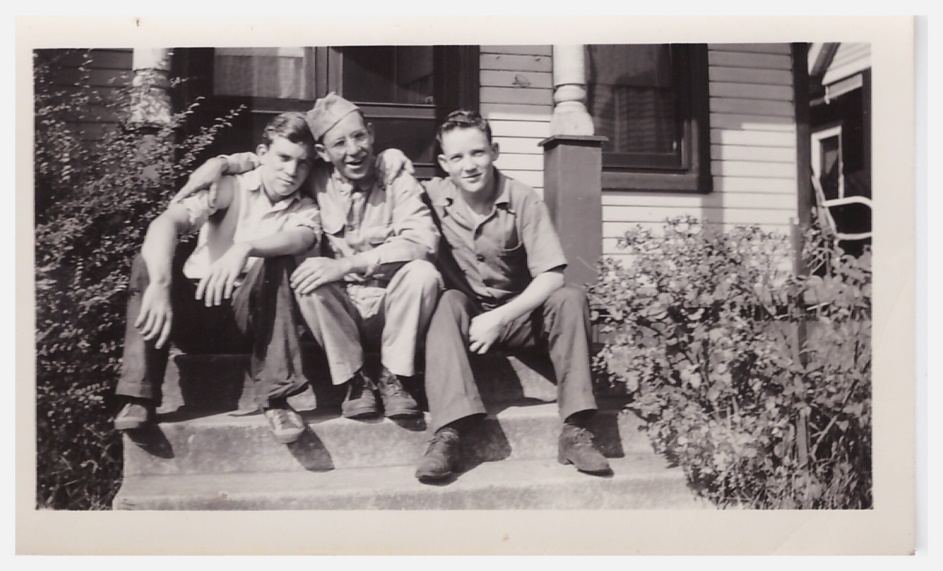 ail yard in a German city and being guarded by one of the local elder soldiers who were put into duty in the last months of the war.
ail yard in a German city and being guarded by one of the local elder soldiers who were put into duty in the last months of the war.
All in his POW group were young, says Wayne, and the guard was old enough to be their father. It was bitterly cold and windy in the railyard, and they used a big steel drum rigged up as a stove in one of the boxcars to keep them warm.
The German guard never left the warmth though, he would give his topcoat, helmet and rifle to one of the American soldier prisoners and have them pose as him outside while the other prisoners would be working. The rifle was not loaded. Wayne said, “We had no place to go, had no idea where we were, and would probably have frozen to death had we tried to escape.” The old guard stayed warm and cozy. One of Hitler’s storm troopers he was not.
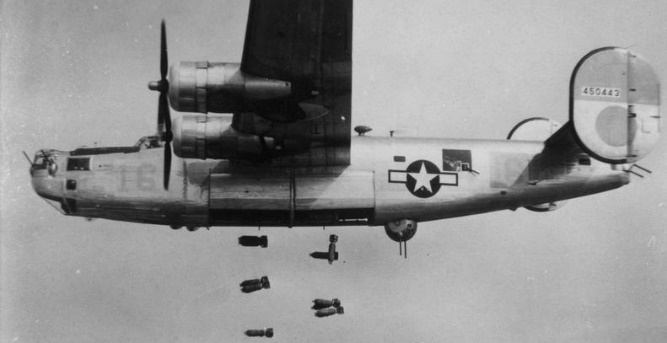 What Wayne did not know was that one of his nephews, Harold Setters, named after Wayne’s brother, was one of the crew members of B-24 bombers that made raids on railroad yards just like the one where Wayne was. And the soldiers could have been cleaning up from such a raid. Lucky for Wayne, they never raided that one while he was there. Esther, fortunately, was totally unaware of what was going at that railroad yard. And that was good. Nor did Chancellor Adolph Hitler, General George Patton and Sergeant Setters. And that was good. This very well could have been the bomber in which Harold is seen in the bottom turret watching the bombs fall.
What Wayne did not know was that one of his nephews, Harold Setters, named after Wayne’s brother, was one of the crew members of B-24 bombers that made raids on railroad yards just like the one where Wayne was. And the soldiers could have been cleaning up from such a raid. Lucky for Wayne, they never raided that one while he was there. Esther, fortunately, was totally unaware of what was going at that railroad yard. And that was good. Nor did Chancellor Adolph Hitler, General George Patton and Sergeant Setters. And that was good. This very well could have been the bomber in which Harold is seen in the bottom turret watching the bombs fall.
Harold had no idea, of course, that his uncle Wayne was probably down there, thousands of feet below, trying to dodge the bombs. The ball turret gunner, or belly gunner as it was known, is looking straight down as the bombs fall.
When Wayne was on Army maneuvers in Middle Tennessee, he visited Esther and his nephews. It was only the second time she had seen him since she left him as a four-year old in Florida. A black and white photo shows him sitting between his two nephews in the house Esther had rented on 8th avenue south in Nashville. The last house Raymond and Harold lived in before they entered the military.
Raymond who was also in High School when Wayne visited, was draft age, enlisted in the Navy and was part of the invasion fleet that deposited soldiers like Wayne at Normandy on the now famous D-Day on Omaha Beach. He was a crew member on one of the landing ships for tanks. Later, after he returned home and married, he finally earned his GED, a high school diploma. Raymond, contrary to his earlier years, as not a very accomplished student, made the highest grades in his GED class. While serving with the Navy on Normandy, 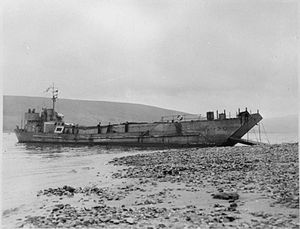 his main job was to keep the big gasoline engine running but was also called on to operate the guns on the big clumsy craft. In addition, he was called on to go ashore and try to demolish the barricades the Germans had installed under the water on the beaches. Esther’s oldest, Harold, was already in the Army Air Corps, now renamed Air Force.
his main job was to keep the big gasoline engine running but was also called on to operate the guns on the big clumsy craft. In addition, he was called on to go ashore and try to demolish the barricades the Germans had installed under the water on the beaches. Esther’s oldest, Harold, was already in the Army Air Corps, now renamed Air Force.
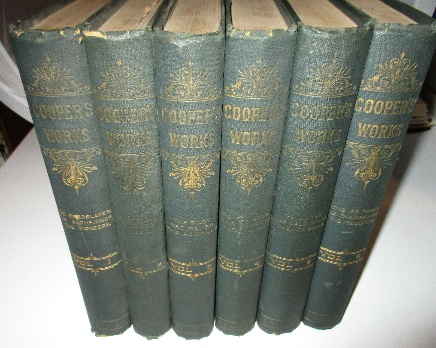 But let’s turn back the clock for about twenty-four years, back to Melbourne. One day, in 1921, as she sat on their front porch, Esther watched with interest as a man walked toward her. He had gray eyes and a friendly smile. At least, this is how she described their first meeting in a short one paragraph biography written on the inside cover of a Cooper’s Works book.
But let’s turn back the clock for about twenty-four years, back to Melbourne. One day, in 1921, as she sat on their front porch, Esther watched with interest as a man walked toward her. He had gray eyes and a friendly smile. At least, this is how she described their first meeting in a short one paragraph biography written on the inside cover of a Cooper’s Works book.
The set of books which one of her sons remembers included the famous story ‘Last of The Mohicans‘, was on a little shelf in their small house on Little Marrowbone for years. Where it is now, is a mystery. One thing for sure, it is worth in today’s dollars a good sum.
And the brief description of this encounter probably means little if anything to the present owner of the set of books.
When Esther’s youngest son read that paragraph, in the middle nineteen thirties, you would have had trouble trying to give that book away.
Back to Esther sitting on her front porch in Melbourne, Florida. This man she was watching was John Setters. Esther was eighteen years old. John was twenty-nine. He had already fathered a daughter, had been to war and was gazing at a teen-aged girl. She was gazing back. Do you see how important just a few details can be? Were you not there watching these two people, this man and the girl, as their lives were being changed? To have lived those few seconds with them, knowing how this chance meeting set the wheels in motion that affected Leander’s lake, hundreds of miles away? Now we know the why of so many years that followed and are still unfurling. The question of “how in the world did these two ever get together” was answered. But the why?
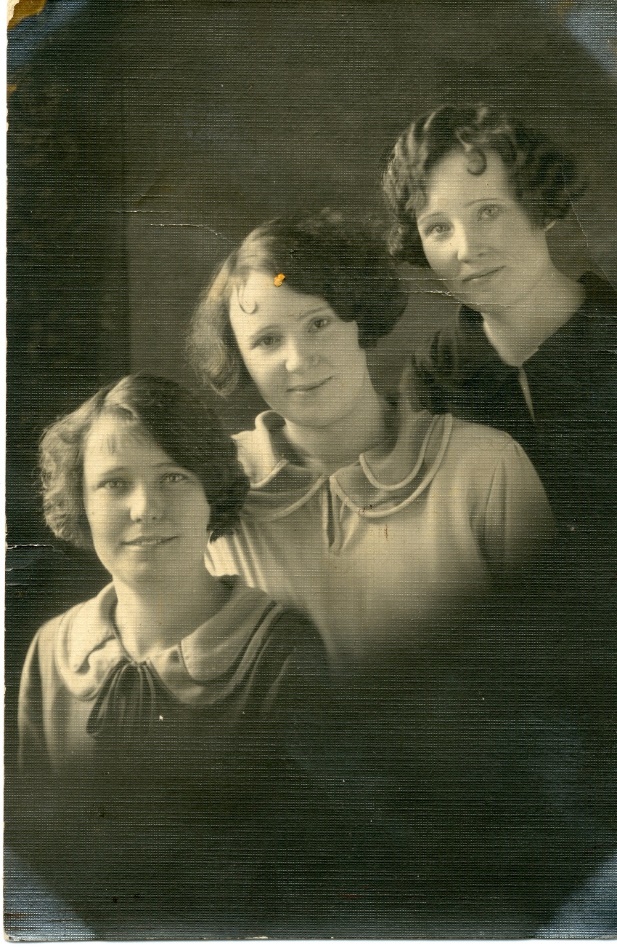
There were three sisters in that Roberts household, with the fourth only recently born of a woman who gave birth to nine children. In the front is Ruth, who will play an important role in Esther’s life. Not for her presence, but because of her absence. Ruth, strangely enough, is listed as having been born in North Carolina, just two years after the birth of Esther, who was born in Sumner county Kansas. No explanation is given as to why their pregnant mother, Gertrude, was in North Carolina, over a thousand miles from Clearwater, Kansas. In the middle is Hazel, who had three daughters and who will remain in Melbourne the rest of her life. Esther, who had told her daughter-in-law that every mother should have a daughter, but she had three sons. In back is Esther, obviously the prettiest of the three. In the middle is Hazel, then Ruth. Ruth’s death will play an important role in Easter’s life years later.
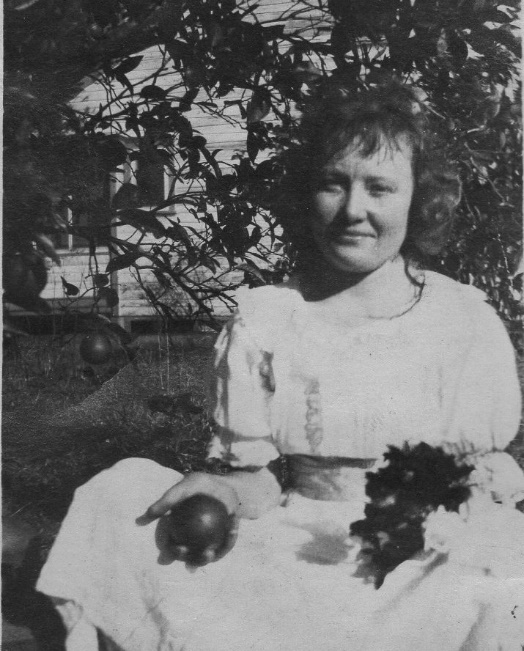 John chose Esther. Or was it the other way around. We’ll never know, will we? Notice their faces, gentle smiles on all three. Contrary to the expressions that we have seen on most of the ladies in our earlier story.
John chose Esther. Or was it the other way around. We’ll never know, will we? Notice their faces, gentle smiles on all three. Contrary to the expressions that we have seen on most of the ladies in our earlier story.
Esther as a late teen, about the time she was sitting on that porch. She is holding an orange in her right hand, and she was sitting in the family orange grove under an orange tree. She was about eighteen years old. Her dad brought the family to Florida from Kansas in 1912, when Esther was just nine years old. And since it takes about four years for a newly planted orange tree to produce fruit, and since Lawrence had a wife, between pregnancies, and several healthy children to work, it is easy to see that nine years after the family began working in the orange groves, and they all did, Esther told her granddaughter, she could easily be sitting under one of the trees holding an orange even before she reached the age of eighteen,
The picture below was taken of the 3 oldest when they were just tiny little guys, still living in Kansas. The girls had not yet developed those beautiful smiles.
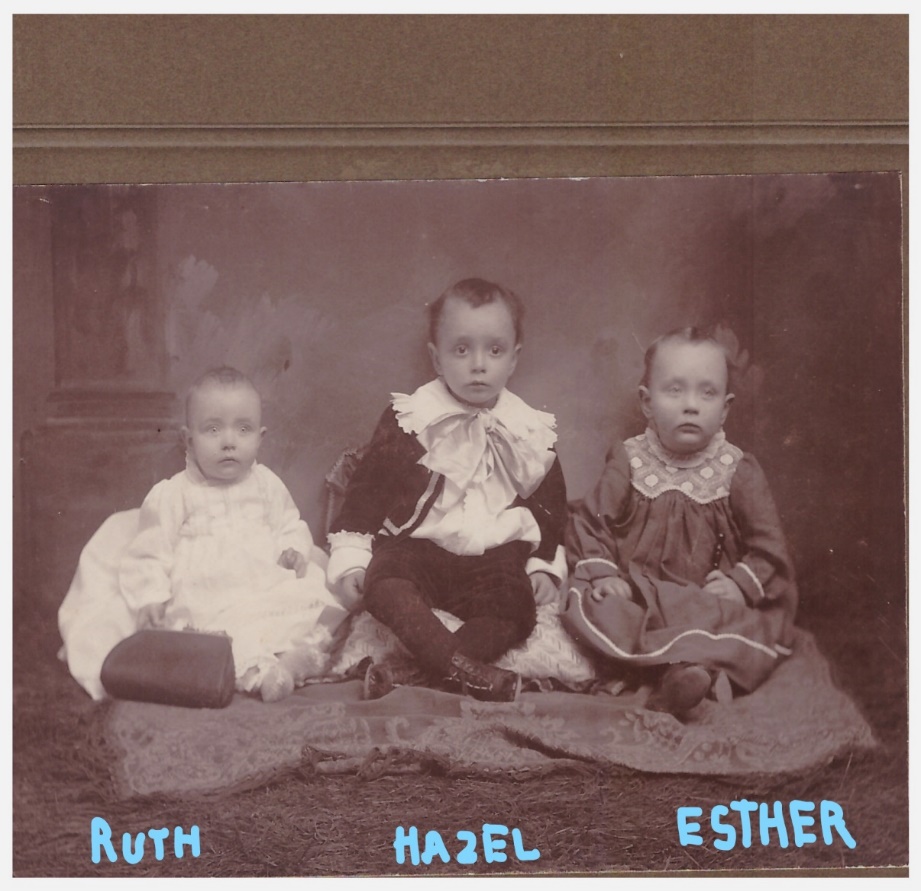 Ever wonder how you would react if someone just walked up to you and told you what is going to happen to you in the years ahead. If Lawrence and Gertrude Black had been told that Ruth and Esther would someday marry the same man and that Hazel would marry a man in Florida that sold frogs to New Yorkers and that her first husband would be killed by a pistol in their bedroom by an intruder who never was identified.
Ever wonder how you would react if someone just walked up to you and told you what is going to happen to you in the years ahead. If Lawrence and Gertrude Black had been told that Ruth and Esther would someday marry the same man and that Hazel would marry a man in Florida that sold frogs to New Yorkers and that her first husband would be killed by a pistol in their bedroom by an intruder who never was identified.
Harold, the first born, with a frilly shirt but with long pants is in the center.
Hazel Harold Esther
Do you think Lawrence and Gertrude would do anything but laugh? And to further complicate the issue, Esther would marry a man who had fought Germany in a war, and she, would give birth to sons who would also fight Germany in another war.
Tell me, does that little girl on the right, Esther, look as though she is destined for all of that? Time will tell. Things happen, don’t they? And things change.
 Lawrence Roberts was father to nine. In the picture above are the first three of them. Esther was the first to marry and leave home. Hazel was the second, but her first husband was murdered in their bedroom in Melbourne. Like her older sister, Esther, Hazel next married a World War One veteran. When she died at age 82, in 1988, no mention was made of her earlier marriage of course. There was no need. Like Esther,
Lawrence Roberts was father to nine. In the picture above are the first three of them. Esther was the first to marry and leave home. Hazel was the second, but her first husband was murdered in their bedroom in Melbourne. Like her older sister, Esther, Hazel next married a World War One veteran. When she died at age 82, in 1988, no mention was made of her earlier marriage of course. There was no need. Like Esther,
Hazel had lived a very productive life. Hazel would be the mother of three children. Esther had three boys. Hazel had three girls. Their sister Ruth, who married her boss in Wichita, Kansas, in 1935, had no children at all.
We know how Esther got to that front porch, but we must get John to Melbourne, Florida. John and his sister, Bertha were born in Kentucky. Bertha in 1887 and four years later, John, July 5th, 1892. Bertha’s involvement in Leander’s lake, yes, her grandfather’s lake was an important one. But let’s go into more detail about that later.
More often than not, events direct our lives. Events over which we have no control and in which we have little if any input. And these events can take place on days of our lives that are supposed to be happy and meaningful. This was the case with John, and twenty-seven years later, his son Harold, on their birthdays. For John, an event thousands of miles from him on July 5,1914, on his 22nd birthday. Germany had assured Austria that she could count on Germany’s “faithful support” if whatever punitive action she took against Serbia brought her into conflict with Russia. This was the signal that let loose the irresistible onrush of historical events… and the beginning of World War One. And we bring John Marshall Setters into our story.
For Harold, John’s son, on his 18th birthday on December 7th, 1941, the Japanese bombed Pearl Harbor; the beginning of World War Two. The Setters family still lived on little Marrowbone when the Japanese attacked Pearl Harbor, but Harold was living with Bertha in Nashville and attending Hume Fogg High School. His brothers, Jim and Raymond, learned about the attack from Jay Sellick, a friend who had heard it on his car radio. The Setters home still had no electricity.
Harold, in later years as a gunner on B-24 bombers, never flew a mission against the Japanese, but he flew thirty-five against the Adolph Hitler crowd, then later, on a B-29 over Korea.
John joined the Army at age 25, in 1917. His 25th birthday fell just two months after Rose and Joseph in Massachusetts welcomed their second son into the world. He was also named John. John Fitzgerald Kennedy. John Kennedy died five months before his 47th birthday. John Setters died in 1947, three months after his 55th. They died from very different causes and lived in two very different worlds. Both Johns served in great wars; John Setters in World War One, the war that was meant to end all wars. John Kennedy served in World War Two. Obviously, World War One failed to end anything. About the same can be said of World War II.
John Kennedy was a war hero, came home and became President of the United States. John Setters simply came home. John Kennedy was able to leave his PT-Boat. John Setters was never able to get out of the trenches.
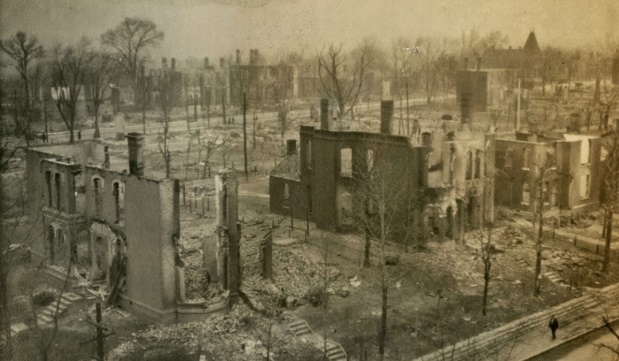 A year before he joined the Army, in 1917, John Setters married a Nashville girl; 17-year-old Ruby Carney, on October 21st, 1916. Tragedy struck Nashville
A year before he joined the Army, in 1917, John Setters married a Nashville girl; 17-year-old Ruby Carney, on October 21st, 1916. Tragedy struck Nashville
four months before they were married.
In a cabin at the corner of First and Oldham streets, the story goes 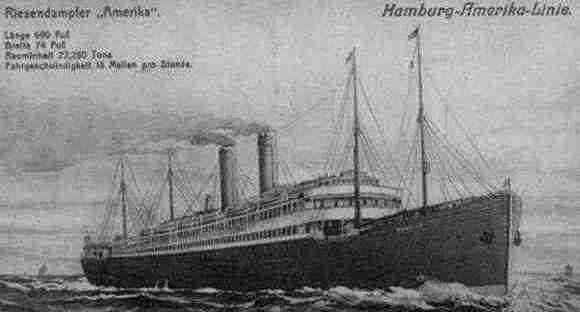 , a young boy’s ball, simple raveling’s of an old yarn sock, landed in a red-hot stove. The boy, in what The Nashville Tennessean later pronounced as “a desperate effort to save his toy,” snatched it from the grate and threw it out the door. In the yard where it landed, the grass, dry and overgrown, ignited. Wind gusts whipped the flames. And in less than five hours on a blustery day, disaster blackened the east bank of the Cumberland River and forever changed the composition and identity of the city. Thousands were made homeless, and that part of Nashville was forever changed. A thirty-five-block area was left looking like this picture. The, then affluent neighborhood, never fully recovered and is now the site of Nissan stadium where the Tennessee Titans play football. In another marriage and the year his third son was born, a violent tornado further pounded the same neighborhood. But John was not affected by that fire or the tornado. He became one of hundreds of thousands that answered the call to go to the trenches of France to fight the Germans.
, a young boy’s ball, simple raveling’s of an old yarn sock, landed in a red-hot stove. The boy, in what The Nashville Tennessean later pronounced as “a desperate effort to save his toy,” snatched it from the grate and threw it out the door. In the yard where it landed, the grass, dry and overgrown, ignited. Wind gusts whipped the flames. And in less than five hours on a blustery day, disaster blackened the east bank of the Cumberland River and forever changed the composition and identity of the city. Thousands were made homeless, and that part of Nashville was forever changed. A thirty-five-block area was left looking like this picture. The, then affluent neighborhood, never fully recovered and is now the site of Nissan stadium where the Tennessee Titans play football. In another marriage and the year his third son was born, a violent tornado further pounded the same neighborhood. But John was not affected by that fire or the tornado. He became one of hundreds of thousands that answered the call to go to the trenches of France to fight the Germans.
At the age of twenty-five he enlisted in the Army. His mother, Carrie, then living in Nashville, instead of out in the hills on Little Marrowbone, may or may not have heard the song being sung in protest of the United States getting involved in the war in Europe, “I didn’t raise my boy to be a soldier”. In two years, Carrie would suffer an almost unimageable tragedy. She would be responsible for the accidental hanging of her grandson.
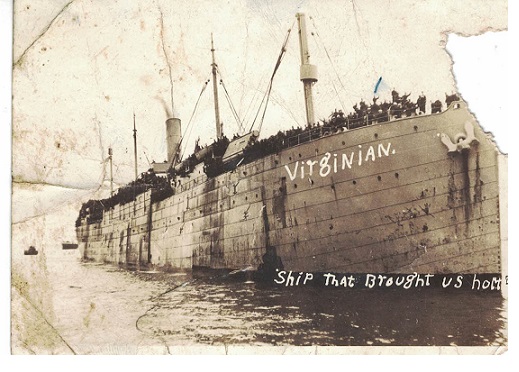 This picture of the troop transport the Virginian was found in John’s belongings by Vickey Setters, one of John’s daughters-in-laws. He had written on it, “The ship that brought us home.” From its appearance it barely made it back, but you can see the soldiers anxiously standing on the deck.
This picture of the troop transport the Virginian was found in John’s belongings by Vickey Setters, one of John’s daughters-in-laws. He had written on it, “The ship that brought us home.” From its appearance it barely made it back, but you can see the soldiers anxiously standing on the deck.
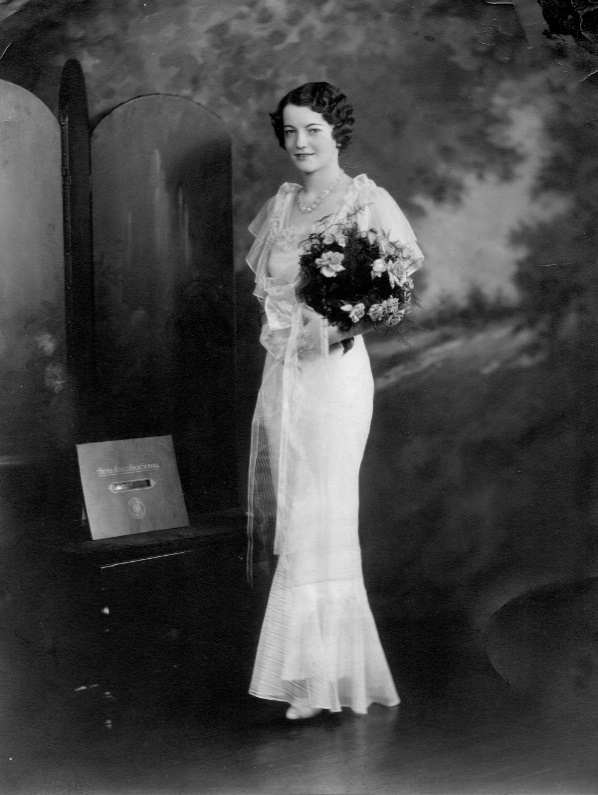 Vickie’s Dad, Emanuel Ponter, an immigrant from Croatia, came over on the Amerika-Line, in 1910, eight years before John’s trip home. The ships are certainly different in appearance, but the emotions of both men were about the same. Emanuel was happy to be leaving Europe and so was John. John was thankful to survive the war and Emanuel was glad to leave Europe before the war started. For Vickey’s dad it was a one-way trip, and he was leaving his home. For John, it was the completion of a round trip, and he was going home. He had survived the danger of the first part because German submarines were very active. In the course of events, German U-boats sank almost 5,000 Allied ships. Germany lost 178 U-boats and about 5,000 men. Emanuel never dreamed of course that he would father three sons who would, in about twenty years, go back to Europe to fight against the Germans. And John never dreamed he would father three sons who would be a part of that same war.
Vickie’s Dad, Emanuel Ponter, an immigrant from Croatia, came over on the Amerika-Line, in 1910, eight years before John’s trip home. The ships are certainly different in appearance, but the emotions of both men were about the same. Emanuel was happy to be leaving Europe and so was John. John was thankful to survive the war and Emanuel was glad to leave Europe before the war started. For Vickey’s dad it was a one-way trip, and he was leaving his home. For John, it was the completion of a round trip, and he was going home. He had survived the danger of the first part because German submarines were very active. In the course of events, German U-boats sank almost 5,000 Allied ships. Germany lost 178 U-boats and about 5,000 men. Emanuel never dreamed of course that he would father three sons who would, in about twenty years, go back to Europe to fight against the Germans. And John never dreamed he would father three sons who would be a part of that same war.
It would be nine years before Nashville’s first radio station, WSM would go on the air. John, in 1916, had already married and had become the father of a baby girl, on December 9th, 1917. They named her Mildred Louise. The United States entered the war at 8:30 on the evening of April 2, 1917, when President Wilson appeared before a joint session of Congress and asked for a declaration of war against Germany. By then about a million men had been killed or wounded in the war in Europe. Some of them were men from America that saw the writing on the wall and had volunteered in the British military.
Other lives were being dramatically changed at that point in history, including Norman Rockwell, who painted his first cover for the Saturday Evening Post, on June 20th of that year, just six months before John and Ruby said, “I do” and one week after that terrible East Nashville fire. Norman was two years younger than John. John went to war and Norman went on doing another two hundred ninety-nine Saturday Evening Post covers until 1963. He died five years later at age eighty-four. He enjoyed another twenty years of success after John suffered his fatal heart attack waiting for that Greyhound bus at Zimmerle’s beer hall. The Post enters our story again as we review the life of John’s sister, Bertha.
Mildred never married, and like her aunt Bertha, spent her entire working career, forty-six years, in the offices of an insurance company; the original owners of WSM and the Grand Ole Opry. Mildred graduated from Hume Fogg High School, located about four blocks north of the old Ryman Auditorium in downtown Nashville. She recalled a memorable event in 1934, at least it was for her. Hume-Fogg’s original incarnation, Hume High School, which opened in 1855 on Eighth Avenue and Broad, was the first public school in Nashville, ten years before the end of the Civil War.

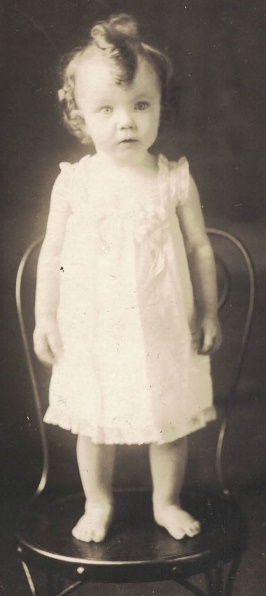 As far as we know, John never was able to be a father to this little girl, Mildred. Ruby, her mother, snatched her up almost immediately and kept John at bay. John soon left for France and World War One, and when he returned to the states Ruby filed for divorce and John in a couple of years left for Florida and was soon remarried. John’s second wife, Esther, also had the middle name Louise.
As far as we know, John never was able to be a father to this little girl, Mildred. Ruby, her mother, snatched her up almost immediately and kept John at bay. John soon left for France and World War One, and when he returned to the states Ruby filed for divorce and John in a couple of years left for Florida and was soon remarried. John’s second wife, Esther, also had the middle name Louise.
One of Mildred’s classmates, a girl named Francis (Fanny) Rose Shore, who had been named the best all-around girl in the class, went out of her way to compliment Mildred on her beautiful graduation dress. If this is the dress in the picture of Mildred at the age of sixteen, and it more than likely was, it is easy to see why the compliment was spoken.
Francis was a beautiful young lady, very popular and from a prominent Nashville family. Mildred cherished that compliment, the rest of her life. Perhaps warmly kept because Francis later became the Nationally famous singer, Dinah Shore.
The name Dinah evolved during the time Dinah was climbing the ladder to success as a singer, which included time on the radio in Nashville. You guessed it; WSM. She often sang the song Dinah, one of the announcers began calling her the Dinah Girl, others picked up on it and Francis decided she like it too. Since the title to this story is about Ladies, let’s explore some things about Dinah Shore that many, back then, didn’t know. Her parents were Russian born Jews, her father, Solomon, had arrived in the United States as an emigrant the same year Leander began scooping the muck and mire out of the lake.
 Dinah was attacked by polio when she was eighteen months old, her picture was on the 2009 forty-four cent postage stamp, throwing a kiss. She was the first female to visit the troops overseas in World War Two and was the first 16, where her father owned a dry goods store. When she spoke, you knew she was from the South. Dinah, a Vanderbilt graduate, didn’t begin playing golf until the age of 52, has a prestigious award for college women in golf.
Dinah was attacked by polio when she was eighteen months old, her picture was on the 2009 forty-four cent postage stamp, throwing a kiss. She was the first female to visit the troops overseas in World War Two and was the first 16, where her father owned a dry goods store. When she spoke, you knew she was from the South. Dinah, a Vanderbilt graduate, didn’t begin playing golf until the age of 52, has a prestigious award for college women in golf.
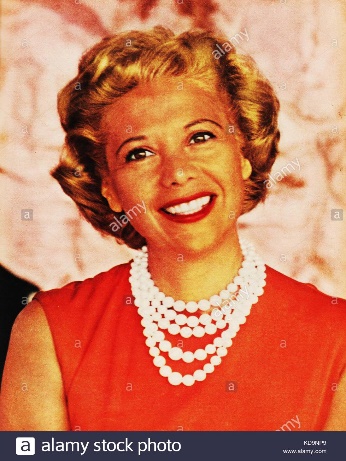 Dinah Shore was twenty-two months older than Mildred Setters, and although they attended high school together, she, in reality, lived in another culture. And because of polio, Dinah limped slightly, but few of the millions who watched her TV show and some movie roles ever noticed it. They just saw her big smile. When Dinah was fifteen years old her mother died. She and her father moved in to live with one of Dinah’s older married sisters. This picture is of Dinah when she was forty-three years of age. She died at the age of 78 from Cancer. Her first number one hit, 1944’s “I’ll Walk Alone” sold more than a million copies. Mildred always walked alone. Dinah seldom did. “See the USA in your Chevrolet, America’s the greatest land of all” practically defined TV auto commercials in the 1950s.
Dinah Shore was twenty-two months older than Mildred Setters, and although they attended high school together, she, in reality, lived in another culture. And because of polio, Dinah limped slightly, but few of the millions who watched her TV show and some movie roles ever noticed it. They just saw her big smile. When Dinah was fifteen years old her mother died. She and her father moved in to live with one of Dinah’s older married sisters. This picture is of Dinah when she was forty-three years of age. She died at the age of 78 from Cancer. Her first number one hit, 1944’s “I’ll Walk Alone” sold more than a million copies. Mildred always walked alone. Dinah seldom did. “See the USA in your Chevrolet, America’s the greatest land of all” practically defined TV auto commercials in the 1950s.
Few people know, and perhaps care even less, as to how radio stations are assigned their call letters. At that time, Sears Roebuck owned a radio station in Chicago. Sear’s motto was “World’s Largest Store. So, it was WLS.
The National Life and Accident Insurance company owned WSM, and its advertising motto was We Shield Millions….so, it was WSM. Clever? It was to them. WSM began broadcasting in October of 1925. Nor did Dinah and Mildred have a clue that someday they would both work for that Insurance Company. Mildred as a secretary and Dinah as a singer on WSM. No wonder that Mildred Setters valued that compliment so highly.
Mildred died November 3rd, 2003, one hundred years and one month, exactly, after her father’s second wife was born. She had spent all of her last years living with and caring for her mother. Strange how lives sometimes appear to have been wasted. Vickey tells of Mildred showing her a picture of a young soldier, taken during World War II, that she had dated. The picture was wrapped very carefully and kept in her desk. He was serious and was interested in marriage, but Mildred’s mother, who at this time had a dislike for men because of her failed marriages, convinced Mildred to let him go. So, Mildred let him go, and lived the life of an Old Maid.
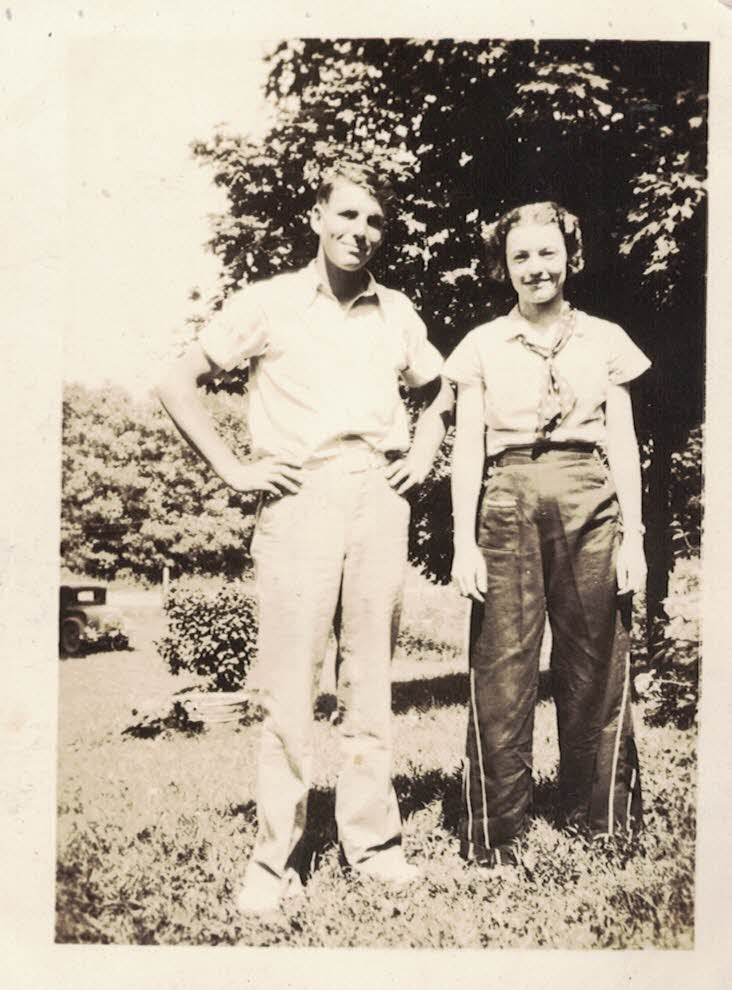
Did she gladly give him up? “If so”, wonders Vickey Setters, “Why did she keep his picture for over half a century?” Vickey later looked the man up in county records and discovered he had, in his later years, lived within a few miles of Mildred and died shortly after she did. Did they ever meet accidentally during all those years, or perhaps on purpose? Did he have a picture of her tucked away someplace? One wonders. They were both 20 years old when this picture was taken. In a few months, Mildred began her life as an old maid.
Mildred did not enter into matrimony, ever, but her mother did; four times. Dinah, whose first big song hit was “I’ll Walk Alone”, was married twice and courted heavily by Burt Reynolds who was twenty years younger. Dinah never walked alone. Mildred Setters did, all her eighty-six years. Did Dinah remember Mildred? Probably not.
Her two surviving brothers, half-brothers really, attended Mildred’s funeral, one day before her youngest brother’s seventy-sixth birthday. Her father’s two sons, John Raymond (mostly known as Raymond as we will in our story) and James, never met her until they were grown men. They both, as grown men, regretted the separation. The meeting didn’t just happen. The two Johns in her life brought that about.
There is no proof that Harold, Mildred’s oldest half- brother ever met her. John, her biological father wrote to his son, Raymond in the Navy, and suggested that he make an effort to meet his sister when he returned from World War II. In the meantime, Raymond had found another young lady to keep him busy. And this young lady almost didn’t enter into Raymond’s life.
Vista Ponter was an Alabama girl, a deep in the country, Alabama girl. Her father was an immigrant from middle Europe who had come to America in the twenties. He found work in the forests of Alabama, met an Alabama girl, married her and after she gave him three sons, she finally brought him a daughter. She became the apple of his eye. After she graduated from high school her father sold some of his property, went back into the woods to cut trees, and used the money so Vickey could go to Nashville, Tennessee to attend a girl’s business school.
And thus, began the twist of fate that brought her into the life of Raymond. We’ll have Vickey unfold that event. “I was supposed to be taken to a home on Elvira Street. After registration that day a man filled his car full of girls and began delivering us to our homes. Finally, at 5 p.m. I still had not found my home, so he took me back to school.
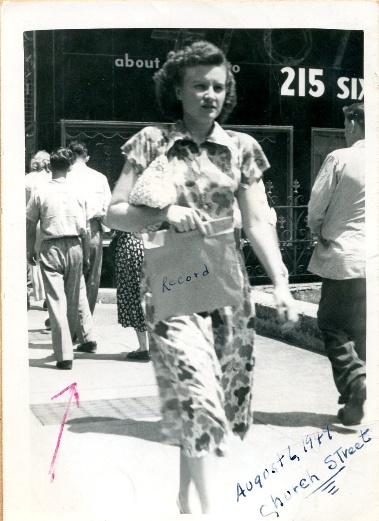 The school’s president said take her to 940 Douglas Avenue, a Mrs. Street has been asking for a girl. “I’ve often wondered how my life would have turned out had that man found Elvira Street.” For a little Alabama country girl this was a big step in life. The majority of girls who graduated from high school at that time did not go to college. In fact, in 1947 the male students in this country’s colleges outnumbered the girls three to one. It wasn’t until l960 that this ratio began to change. But when it did, the change came about rapidly. And in 1947 about half of college admissions were veterans on the GI bill. Again, the female veterans lagged. Only about three out of every 100 female veterans used the GI bill to attend college. Most of them either did not know they were eligible or just simply followed the cultural role at the time; get married, take simple jobs, get pregnant, then stay home and raise the kids.
The school’s president said take her to 940 Douglas Avenue, a Mrs. Street has been asking for a girl. “I’ve often wondered how my life would have turned out had that man found Elvira Street.” For a little Alabama country girl this was a big step in life. The majority of girls who graduated from high school at that time did not go to college. In fact, in 1947 the male students in this country’s colleges outnumbered the girls three to one. It wasn’t until l960 that this ratio began to change. But when it did, the change came about rapidly. And in 1947 about half of college admissions were veterans on the GI bill. Again, the female veterans lagged. Only about three out of every 100 female veterans used the GI bill to attend college. Most of them either did not know they were eligible or just simply followed the cultural role at the time; get married, take simple jobs, get pregnant, then stay home and raise the kids.
This is one of those pictures that street photographers took in 1949, after Vickey had graduated from Draughns and shortly after Vickey and Raymond were married. Today if someone popped up and took your picture it would be something you could bop him for.
Of course, the culture at the time, and especially in the South, made it almost impossible for black veterans to use the GI bill. They had sub-standard primary and secondary educations and were limited to overcrowded and under-funded historically black universities. African American girls almost never attended college. One of the nation’s finest predominantly black universities was Fisk, in Nashville, just a five-minute drive from 1116 Buchanan Street, but at that time, culturally, not even in the same world.
It was not until 1947 that a black person assumed the presidency of Fisk, and of course it was a man, Charles Spurgeon Johnson. He was born in Virginia, served as president of Fisk until his death in 1956. Like John Setters, Johnson was born about 275 miles from Nashville. Both ended up in Nashville however, but in totally different roles. Johnson was on his way to New York from Nashville when, while the train was stopped in Louisville, he stepped outside onto the platform of the station. It is assumed he did so to enjoy one of his FATIMA brand cigarettes which he smoked constantly.
He had been suffering terribly from migraine headaches, nervousness and was quite noticeably in ill health at the time. But, he refused, as was the culture of the time, to stop the chain smoking. The heart attack was instant. John was on his way to Nashville. His heart attack came when he was waiting for a greyhound bus. The heart attack was instant and fatal. Johnson was sixty-three, John was fifty-five.
Both had smoked tobacco nearly all their lives. In 1947, a man who had lived to be ten years old in 1900, could expect to live until he was about sixty-eight. Since both smoked, Johnson a chain smoker and John a heavy drinker, they reached the ends of their lives short of the norm. And they reached the end of the line in the same year, 1947. Charles, waiting for the train; John, waiting for the bus. Many of the girls who had enrolled into the Draughns Business College, which taught basic bookkeeping and secretarial skills, were not residents of Nashville. Nashville homeowners who had rooms they wanted to rent out to students were on file at the school’s office. The office personnel simply assigned a girl to one of the homes.
Vickey was in a car with several girls whose driver would drop them off at the addresses he had been given. For some reason the driver could not find the address given for Vickey, so he brought her back to the school. Now here is how fate entered the picture. Mrs. Street had a niece named Edith Drennan, who at that time, and only for a very brief time, was married to Jim Setters.
Jim was away on one of the many islands in the Pacific Ocean in the Marines. Edith had visited Esther Setters, Jim and Raymond Setters’ mother. Raymond had just been released from the Navy. Edith wanted Vickey to meet Raymond. Edith more than wanted Vickey to meet Raymond. She sought a closer, more intimate relationship with him, herself. But Raymond stood his ground. He told Jim about it later. She made her move toward him when they were alone one day at 924 Montrose. But, in later moves, where Edith worked, she found a guy and soon Jim was called to the Marine Battalion tent and was shown a divorce decree Edith had filed. Jim was advised to just let things go, there was really nothing he could do.
The ultimate DEAR JOHN LETTER. Ernest Tubb and Loretta Lynn made money about six years later recording the song that included the line, “Will you please send back my picture, my husband wants it now.” Jim doesn’t remember what he did with hers. Should he want to see one of her, which he never did after that, it was in the Howard High school 1945 yearbook. And, if she didn’t want him, he felt likewise. The entire marriage was entered into as Jim was on orders to go overseas. The marriage was hasty took place with youthful frustration and was something Jim regretted the rest of his life. Perhaps he was just a lonely Marine and she, a lonely girl. They had never dated one another in High School. Their only close relationship was singing in the school’s glee club. In that glee club were Raymond Procter and Mary Smallwood. Raymond and Mary had already married.
So, Vickey met Raymond, they fell in love and that’s how Vickey almost became one of the Ladies of the Lake. But, before they married, Raymond called Mildred and asked if it would be alright if he came over to meet her. Mildred agreed. When Raymond and Vickey knocked on the door of the house, which by the way was only a couple of blocks from the General Hospital where Raymond and his brother Jim were born, they were met by Mildred’s mother. She warmly invited them in. One of the first things she said was, “You look just like John.”
In Mildred’s later years, even before her mother died, the close relationship with Vickey continued. This relationship made Mildred’s final days more pleasant. Vickey said later that Mildred’s mother said John was her only really true love. Little is known about how John and Ruby met, but the reason they separated, according to Ruby, was that John spent too much time out at the lake working with his dad and grandfather and spent too little time with her and Mildred.
.
We do know however, Ruby married three more times after she and John were divorced, and, like John, had more children. Two of John’s three sons referred to her as Mama Woodall. Jim, the youngest could not bring himself to use that term for her. He said his respect for his own mother prevented his doing so. Was he right or wrong? Who knows? But Jim remembers well the last time his eyes looked into Mildred’s. She was lying on the bed in the nursing home in Nashville and Jim, Raymond, Vickey and Dana were leaving. The gaze was long and somehow Jim knew it would be the last time they would see one another. Of course, he could have been mistaken. But he was not. Not this time. named the Ladies and baby Ladies of the Lake? If Mildred were conceived there, she would be the only female Setters to begin life at Leander’s Lake.
One thing is for sure though, Mildred was conceived in April of l917, the very month that the United States entered World War One, a war in which her father would soon volunteer to serve and from which he would return a changed man and to be spurned by Mildred’s mother.
In an exchange with the author of this story of information and pictures, Raymond’s wife Vickey wrote, “I found a picture of Mildred and her friend, Donald Stanford, made June 13, 1937. I talked with Mildred’s best friend, Vickey Margaret Cate, and she said that Mildred was in love with Donald but Mildred’s mother Ruby, put a stop to the romance. Ms. Cate did not say how though.” Vickey Setters went on to say, “It could have been because she herself had experienced bad marriages and didn’t want her daughter to go through all of those bad experiences.”
On his Army release document John’s occupation, before he enlisted at the age of 25, is listed as a mechanic. During the war he drove a tank and suffered mustard gas injuries on the trench filled battlefields of France. He left the Army in 1919, re-joined his family in Nashville, Tennessee and settled down as best he could. But John and Ruby parted ways. Mildred remembered her mother saying that John was spending too much time at the lake and not enough time with his wife and daughter. So, after being in a terrible war, married and a father, John was footloose and, as they say, fancy free.
As always, a great change follows wars and in the early twenties it was Florida that was dramatically affected. People had money, cars were capable of making longer trips, the railroad was improved, and the warm sandy beaches of Florida were beckoning to the cold climate folks up north. Property values went up in Florida, hotels were being built and jobs were seeking talented workers. And John had talent. Anything mechanical he was good at. In 1921 John accepted
Eventually ending up about fifty miles from where she started in 1903, in Kansas, where she died, June 1st, 1972, at the age of sixty-nine from a faulty appendectomy. One of her sons, Jim, as a fifty-five-year-old man, stood at the side of the glass enclosure in which his mother lay in a deep coma. He prayed that she be spared as he stood there watching the machines prolong her life. But God has ways that we don’t understand. For the last time Jim told his mother that he loved her. This was not said very much in that family. But Esther, did not hear him.
For Esther, at the young age of eighteen, it was a new experience in life. This handsome man, entertainer during that war to visit
and entertain the troops on the front line. She was born in Winchester, Tennessee in 19 about ten years older than her was sweeping her away. It had been her chore in the past three years or so to almost be the mother to her younger a job in Melbourne, Florida as an electrician at a hotel construction site. He was getting ready to pull wires and unbeknownst to him, a few strings. Esther didn’t know it of course, but this handsome man walking toward their porch was the beginning of her trip to Leander’s Setters Lake. Although Esther did not mend the lake with shovel and hoe, her three sons did. She did little to keep the lake alive, but she spent many years chopping and hoeing in the garden nearby that kept the Setters family fed. She would spend the next twenty-two years of her life there. siblings. Now, she was being made the center of attention. And hormones being what they are, Esther became pregnant.
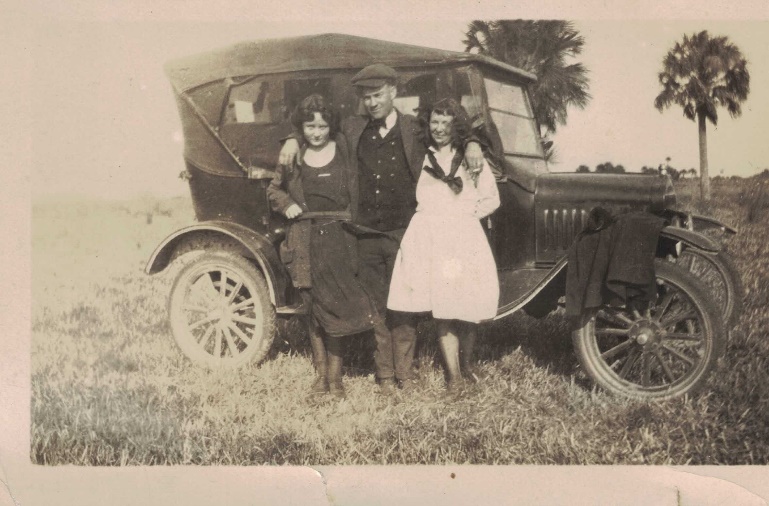 Esther and her sister Hazel were just beginning to spread their wings of freedom when the picture above with John Setters was taken. Was the fancy T-model Ford John’s? We don’t know. Did John and Esther drive that car to Little Marrowbone in 1924? We’ll never know that either. Did John find difficulty choosing between Esther and Hazel? That too, remains a mystery. Hazel married not too long after this event and her husband was murdered in their bedroom by an intruder. That too, is a mystery……….one thoroughly and openly discussed in years to follow. There were words of speculation that fell on the ears of three little boys, miles away and years later down on Little Marrowbone. Contrasting thoughts brought into these little boys of a mysterious and never identified burglar or was the deed done by someone already in that bedroom.
Esther and her sister Hazel were just beginning to spread their wings of freedom when the picture above with John Setters was taken. Was the fancy T-model Ford John’s? We don’t know. Did John and Esther drive that car to Little Marrowbone in 1924? We’ll never know that either. Did John find difficulty choosing between Esther and Hazel? That too, remains a mystery. Hazel married not too long after this event and her husband was murdered in their bedroom by an intruder. That too, is a mystery……….one thoroughly and openly discussed in years to follow. There were words of speculation that fell on the ears of three little boys, miles away and years later down on Little Marrowbone. Contrasting thoughts brought into these little boys of a mysterious and never identified burglar or was the deed done by someone already in that bedroom.
Of course, a thorough investigation was conducted by professionals and any amateurish speculation is unwarranted, unneeded, and clearly not justified.
Years later, when those little ears were wrinkled, they would be called on to determine the whys and wherefores of another fatal bedroom incident. This time, involving another aunt but on their father’s side of the family. Their aunt Bertha discovered the body of one of her husbands in bed with a shotgun by his side and part of his head blown away. It was determined to have been a suicide. Of course, there were no witnesses. There seldom are, when something happens in bedrooms in the late or wee hours. To be fair though, the nature of the victim in Bertha’s case was totally unlike the one involving Hazel. “Nuff” said.
There was a time when John and Esther were making plans to stay in the Melbourne area. They bought a building lot not far from where is now located the NASA space Center at Cape Canaveral. But things were happening, their first son Harold was born. And John? Little Marrowbone was beckoning.
John and Esther sold the lot in 1926 for just ten dollars. They were living on Little Marrowbone and of course had no input into the price offered. They knew they could not continue to pay the taxes and from all indications had no intentions to move back to Florida. She had two children and in one year the third and last was born. The lot was not far from where Ponce De Leon landed four hundred ten years earlier in his quest for the fountain of youth at St. Augustine. If he had waited until 1921, he could have used Esther’s youth, because it was then that she moved to another shore, not the Atlantic, but to the shore of Leander’s Lake. Esther was miles away on Little Marrowbone, so her sister Ruth handled the selling of the property. Ruth too would soon leave the family, head back to Kansas where she would play another important role in the life of Esther.
No mention was ever made, at least to the author’s knowledge, as to how John and Esther with their baby, made that trip from Melbourne, Florida to Little Marrowbone. The Model-T Ford was the most popular family car at the time, but John and Esther were nearly broke. The highways in 1923 were hardly drivable. In fact, an Army convoy headed up by a young Army officer named Dwight Eisenhower took one hundred and sixteen days to travel thirty-three hundred miles in a coast-to-coast trip just two years before the couple left Melbourne. John and Esther probably remembered that trip for a long time.
Eisenhower surely did, when he became president in 1960, forty years after the convoy trip, Dwight spearheaded the historical making of the Interstate Highway system. John and Dwight. John, born in 1892 and Ike 1890, served during the First World War. Lucky for them though, they both could have had Happy Birthday sung for them; the traditional song was written in 1893 by a Kentucky kindergarten teacher and her sister.
Their first lyrics were not Happy Birthday to You, instead it was a song for their little kindergarten children, Good Morning Too You. The Happy Birthday version didn’t appear until about the time Leander began scooping the muck out of his lake, in 1908.
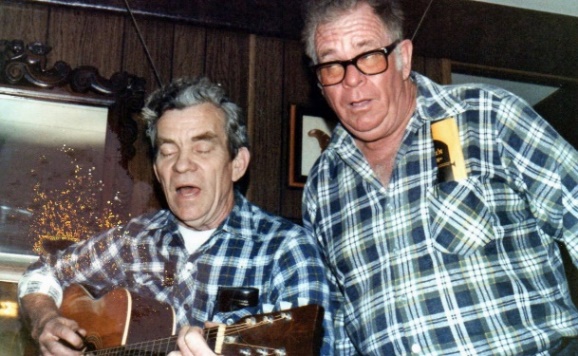 Speaking of singing, music was a noticeable part of the Setters family perhaps because of John. The piano from the dance hall, a player piano, was brought to the Setters house. There were rolls of perforated music that were placed inside the piano and all you had to do was pump the pedals and the keys would perform. But as is seen in this picture in their later years in a rare photo of Raymond and Harold, the Setters boys could also play instruments. Raymond also played the harmonica.
Speaking of singing, music was a noticeable part of the Setters family perhaps because of John. The piano from the dance hall, a player piano, was brought to the Setters house. There were rolls of perforated music that were placed inside the piano and all you had to do was pump the pedals and the keys would perform. But as is seen in this picture in their later years in a rare photo of Raymond and Harold, the Setters boys could also play instruments. Raymond also played the harmonica.
Before the war began, Ike was busy turning the pages in school- books and John was busy raising the hoods on all kinds of cars and trucks. Both became proficient at what they were pursuing. Two months after John was born, on July 5th, 1892, the first version of the Pledge of Allegiance to the Flag was written.
Dwight, as president, signed the bill adding “Under God” the year that John’s grandson, also named John, was born, July 2nd in 1954, sixty-two years after the original Pledge of Allegiance was written and the same number of years after his grandfather was born. Unlike his grandfather, John Setters, and Ike, John chose to do his military duty deep down in the ocean in submarines. By the way, Ike named his son John, who pursued a fine military career.
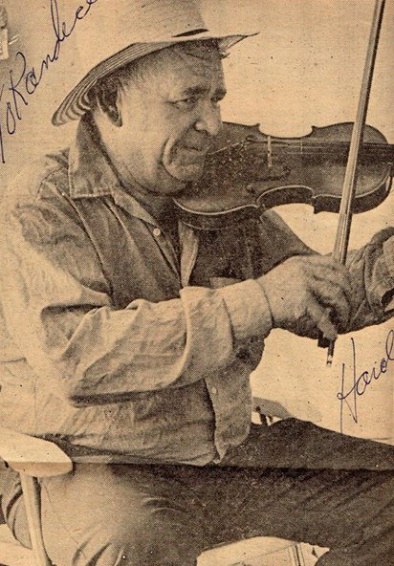
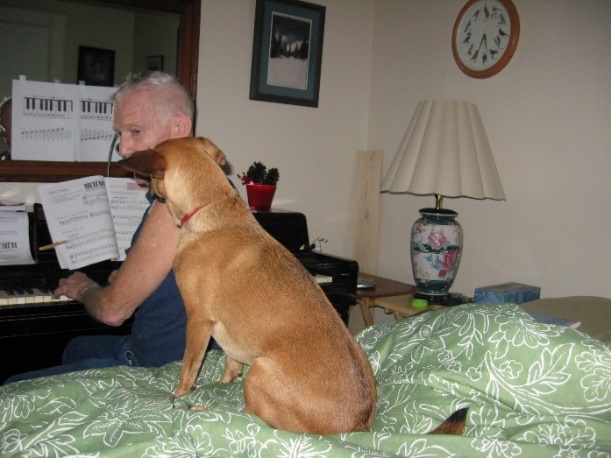 The Setters boys, who failed to pursue music as little ones, did allow it to enter their upper years. Here you seen Jim, who began piano lessons at the age of 84 serenading his grandson’s dog, Nya, who seemed to be enjoying the treat.
The Setters boys, who failed to pursue music as little ones, did allow it to enter their upper years. Here you seen Jim, who began piano lessons at the age of 84 serenading his grandson’s dog, Nya, who seemed to be enjoying the treat.
Harold, after retirement from the Air Force followed his father’s talent with the fiddle. He dedicated this picture to his daughter, Kandice.
Later, as will be shown in other versions of our story it will be Jim’s two children who will become professional musicians, at least in their early years.
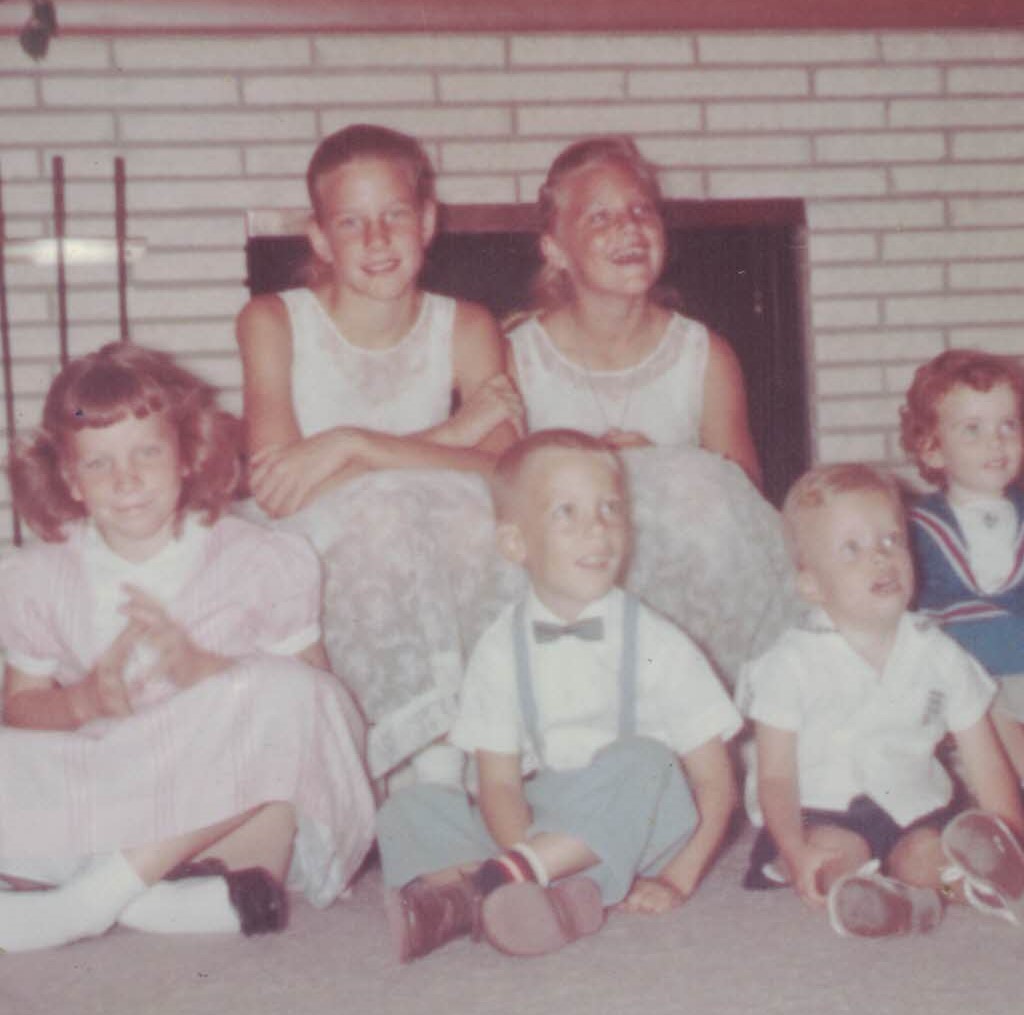 These six children are Esther’s grandchildren. The two older girls in the back are really the daughters of Harold’s first wife, a divorcee he married in 1950. Jamie brought Diane and Cindy into the marriage. The little girl on the left side of the picture, holding her hands in front of her is Kandice. This was Harold’s only actual living child. A baby boy, named John Marshall Setters, died twenty-one and a half hours after birth, in 1953.
These six children are Esther’s grandchildren. The two older girls in the back are really the daughters of Harold’s first wife, a divorcee he married in 1950. Jamie brought Diane and Cindy into the marriage. The little girl on the left side of the picture, holding her hands in front of her is Kandice. This was Harold’s only actual living child. A baby boy, named John Marshall Setters, died twenty-one and a half hours after birth, in 1953.
The boy with the bowtie and suspenders is John, son of Jim and Dana.
The other little boy is John, son of Raymond and Vickey.
The little red headed girl on the right side of the photo is Carol, daughter of Jim and Dana.
The picture was taken on the hearth of the fireplace in the home of Esther and Verne Brooks in Wichita, Kansas in about 1959. Only one of the six children chose the military. John joined the U.S. Navy at the age of 24. His grandfather, John, joined the Army when he was a year older, at 25. John, the soldier, served in World War One, as we have previously indicated. John, the sailor, served during the cold war with Russia. While Jim, the father of John the sailor, was writing this story he asked his son to write a true, a little weird maybe, but interesting incident he experienced while serving his twelve years.
John, who was a nuclear fast attack submarine fire control petty officer, (for you non-Navy folks, fire control has nothing to do with putting out fires, he fired and guided missiles and torpedoes) wrote about a strange event while he was serving aboard the USS BATFISH during the strained relations with Russia. John wrote the following piece, and this author (John’s father) has named it:
THE VERY BRIGHT LIGHT IN THE NIGHT SKY OVER THE ENGLISH CHANNEL, AS SEEN
THROUGH THE PERISCOPE OF AN AMERICAN
FAST ATTACK NUCLEAR SUBMARINE
(JOHN’S FATHER IS NOT KNOWN FOR GIVING SHORT TITLES FOR HIS SON’S ENDEAVORS)
Once we were going through the English Channel at night on the surface. A submarine on the surface is a rather strange creature. When you are on the surface, the bridge is manned (you go up the ladder inside the sail and at the top you swing down pieces of the sail top covering and now there is a hole and a small deck plate on which you stand and look out over the top of the sail). If you’re surfaced, the sail is manned, you are not going really fast. So, it is night and there are lights everywhere because well, it’s the English Channel, like the road that never sleeps, a fairly popular sliver of water between England and France.
I am in the control room on the periscope, but I take a couple of steps and check out the horizontal radar display manned by Joe Lovell and there are literally clumps of dozens of anchored fishing boats in tight formations with merchant ships interspersed throughout. It looks like someone spilled salt all over the radar screen. When I walk the periscope around, there are literally over a hundred lights in every direction. You could run into one of those lights and it would be a very bad day. Of course, eighty percent of our ship is underwater so the submarine does not look like much at night through night vision goggles from the bridge of a surface-ship, but a surface ship would not want to hit us.
This is a submarine, built a little bit more stoutly than a rusted piece of tin that comprises most merchants out there. Now, all mariners are supposed to know “The Rules of the Road” which includes a fairly large amount of information including the light configuration of different types of ships, trawlers or small boats. The submarine has a submarine beacon above the sail. “Submarines may display, as a distinctive means of identification, an intermittent flashing amber (yellow) beacon with a sequence of one flash per second for three (3) seconds followed by a three (3) second off-period.” In addition to that, there is also a small, steady white light on top of the rudder. That’s it.
Submarines do not have the red and green lights denoting port and starboard. Overall, not real impressive. The light above the sail is maybe 25/30 feet above the water…if that. So, the Officer of the Deck is on the bridge with lookouts, down in the control room the dive-and-drive guys are steering under supervision, I am manning the periscope and Joe is manning the radar. I am swinging around, taking bearings at lights mostly in front of us (did I mention that lights are everywhere?) and suddenly I see a very bright, very powerful white light and it is dead ahead. Have you ever seen the main headlight of a train? Whoa.
The bright light is not moving left, it is not moving right, it is not blinking and it’s bearing, relative to us, is 000 degrees. It is tall and it is bright. That is not what you want to see. So, I ask Joe what he has on the radar dead ahead and he replies “nothing”. What?
This thing is brighter than all the lights in the channel combined! It has to be there. It has to be big, it has to be close! Joe cranks out the range of the radar to max and says, “John, there is nothing there”. What?!
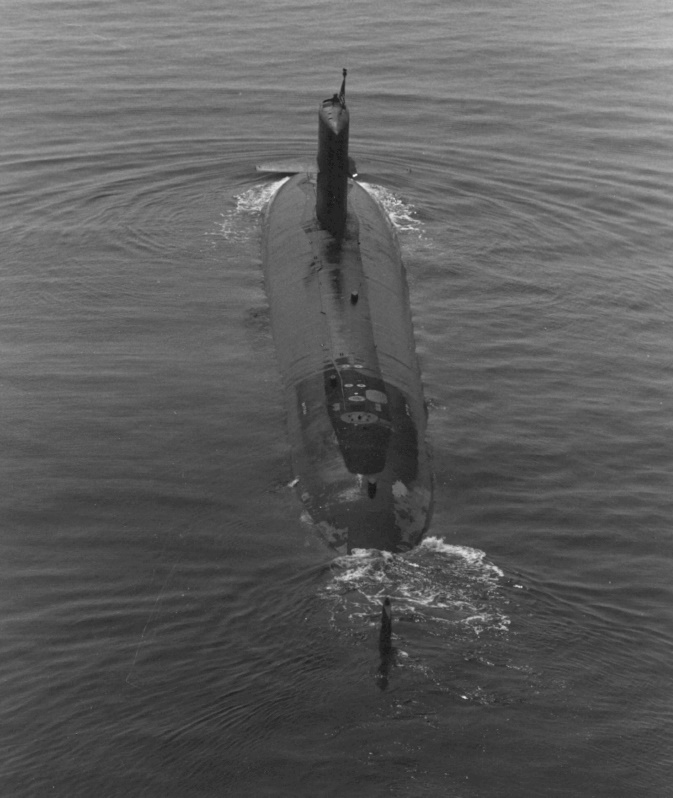
So, we continue heading straight for this thing…for the rest of the night. I get relieved just before dawn and I go to bed. Just before lunch I get up and go up to control and talk to the guy who relieved me, Tim Wesley. He says they finally caught up to this thing around ten that morning and it is a North Sea oil platform.
That light was…who knows, 200, 300, 400 feet above sea level? and bright as the sun. In the moment though, it was a real head scratcher.
That happened just a couple of days before we had to rendezvous with a U.S. Navy seal team on a rubber raft being chased by hostile forces shooting machine guns at them and us, but who cares about all that stuff?
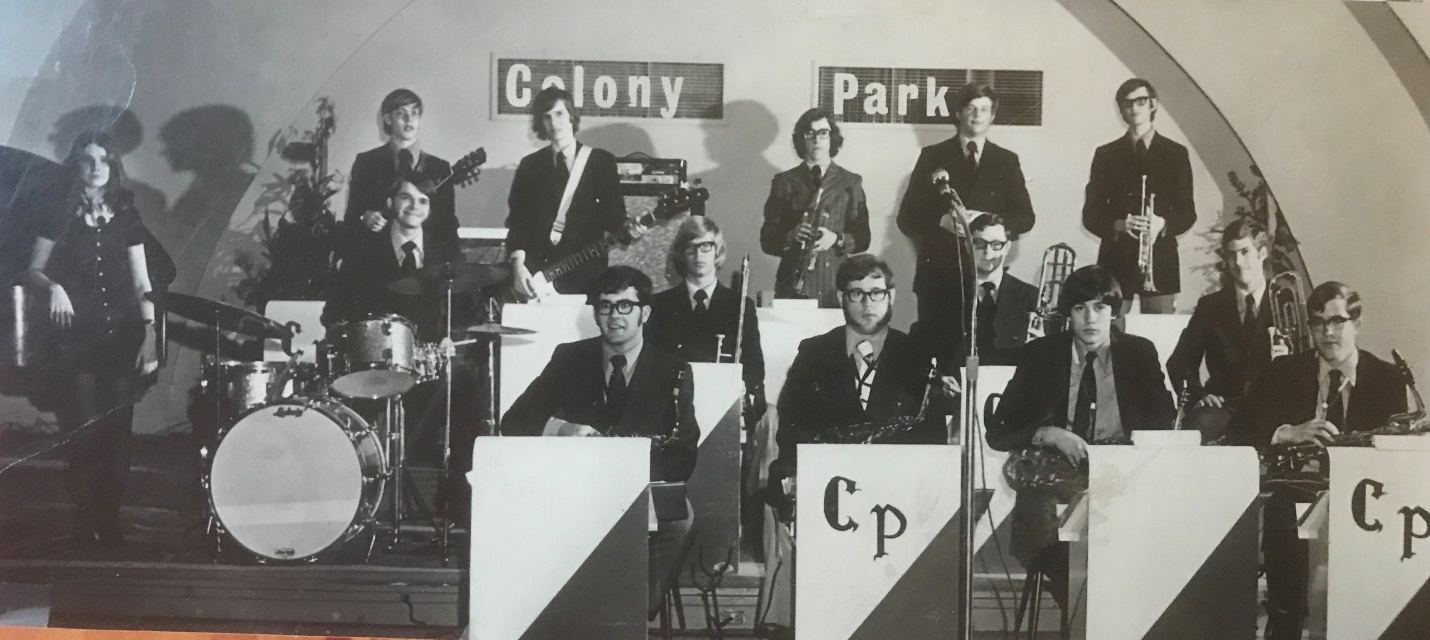 The author has been expounding on the musical talents of his two children from time to time and here they are in a black and white photo. This picture of the band was taken by Carol Setters who is seen leaning against the piano she played in the youthful big band. The band known as the Colony Park Orchestra was the creation of the Whitfield family whose son, a multi-instrument youth musician, would normally be the drummer. Carol used her I-phone to capture the Colony Park Orchestra picture from her ninety-four-year-old widowed father’s dining room tabletop where it has been for several years, protected by a couple of layers of quarter of an inch thick plexiglass. Carol, now a 65-year-old grandmother and her brother, John, about to retire from a firm doing work with the U.S. Navy’s under-water warfare Division are identified by the s.
The author has been expounding on the musical talents of his two children from time to time and here they are in a black and white photo. This picture of the band was taken by Carol Setters who is seen leaning against the piano she played in the youthful big band. The band known as the Colony Park Orchestra was the creation of the Whitfield family whose son, a multi-instrument youth musician, would normally be the drummer. Carol used her I-phone to capture the Colony Park Orchestra picture from her ninety-four-year-old widowed father’s dining room tabletop where it has been for several years, protected by a couple of layers of quarter of an inch thick plexiglass. Carol, now a 65-year-old grandmother and her brother, John, about to retire from a firm doing work with the U.S. Navy’s under-water warfare Division are identified by the s.